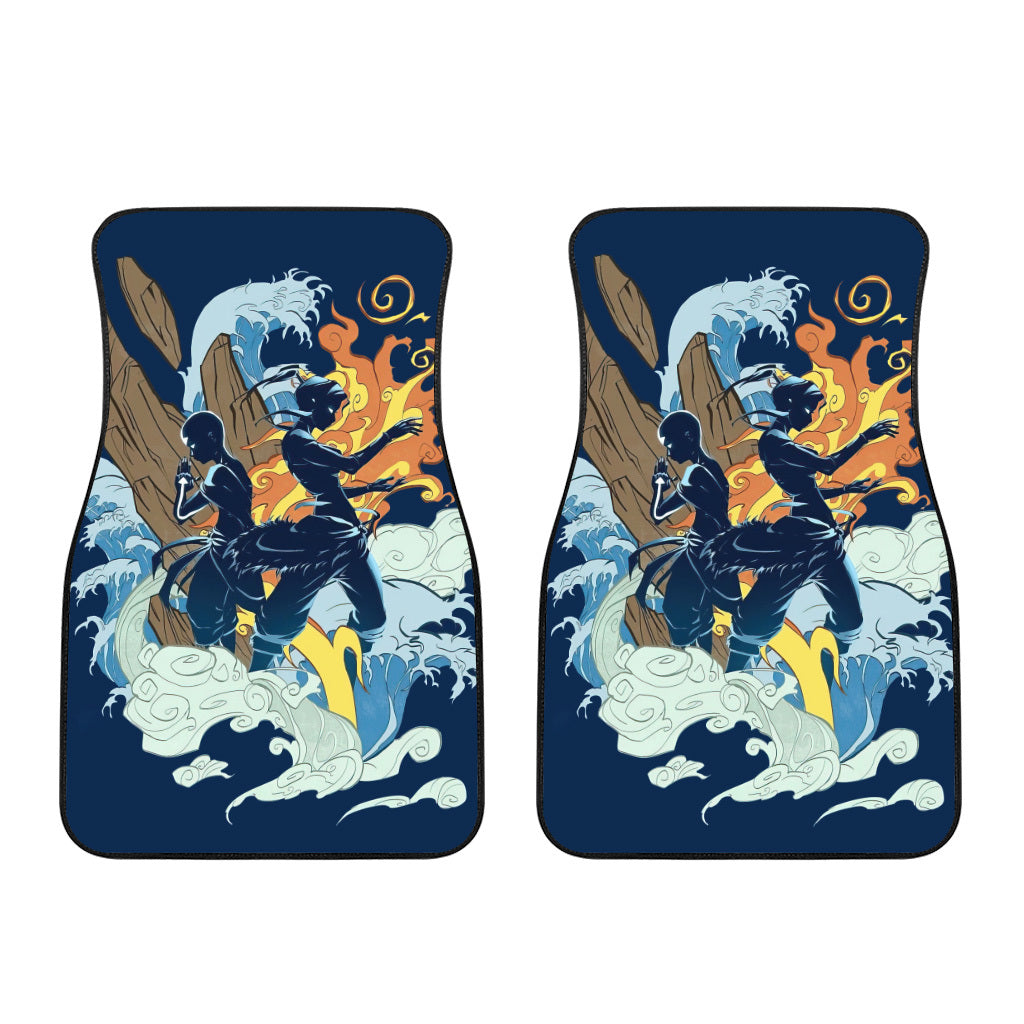Anime, Avatar: The Last Airbender
The Enduring Appeal of ‘Avatar: The Last Airbender’ Explained

Even after fifteen years, the conversation around “Avatar: The Last Airbender” continues to thrive. This beloved Nickelodeon cartoon has blossomed into a full-fledged franchise, complete with comics, book series, and an upcoming live-action adaptation on Netflix. In the realm of nostalgic TV shows, “Avatar: The Last Airbender” stands unrivaled, not only enduring through the years but also solidifying its place as one of the greatest shows of its time.
One of the key factors behind the enduring appeal of “Avatar: The Last Airbender” lies in its commitment to worldbuilding and storytelling. Crafting an entire fictional world, complete with its own rules, structures, magical systems, and political landscapes, is no small feat for a fantasy series. Yet, “Avatar: The Last Airbender” fully immerses viewers in a rich and coherent setting, interweaving intricate lore throughout its main narrative.
At its core, the show follows the journey of Aang, the last surviving Air Nomad and airbender. Awakened after a century-long slumber, Aang discovers that the world has plunged into chaos during his absence. As the Avatar, a spirit that reincarnates across generations to maintain balance between the four nations and their respective elements, Aang shoulders the immense responsibility of restoring harmony. Alongside his friends Katara and Sokka, he embarks on a quest to master all four elements—air, water, earth, and fire—and defeat the tyrannical Firelord Ozai before he decimates the remaining free world. Throughout their journey, they encounter challenges, including the relentless banished prince Zuko.

While the show initially appears as a lighthearted children’s adventure, with Aang engaging in episodic quests to restore balance, it gradually delves deeper into the expansive lore of the Avatar and the interconnectedness of the world. Early on, viewers glimpse the magnitude of Aang’s powers when he inadvertently activates the Avatar spirit, causing statues of past Avatars to glow in temples worldwide. This hints at a profound spiritual lore that binds the four nations together and unveils the existence of the Spirit World—an entirely separate plane of existence.
As the series progresses into Book Two, Aang explores the Earth Kingdom, encountering complex conflicts and navigating intricate political dynamics. Notably, the Earth Kingdom stronghold of Ba Sing Se, which strives to maintain an illusion of peace by denying the existence of the ongoing Hundred-Year War, presents a compelling exploration of political deception and oppression.

Beyond its worldbuilding, “Avatar: The Last Airbender” showcases a brilliantly crafted magic system known as bending. While the concept itself is relatively straightforward—Water Tribe benders manipulate water, Fire Nation benders control fire, Earth Kingdom benders manipulate earth, and Air Nomads bend air—the show pushes the boundaries of bending with creative and increasingly intricate applications. Waterbending, for example, extends beyond manipulating existing water sources and can draw moisture from the air, plants, and even within the human body. Firebenders with exceptional control can generate lightning, while skilled earthbenders can identify minuscule traces of earth within metal, enabling them to bend metal itself. Airbenders possess the ability to manipulate the air around them, granting them incredible speed, flight, and the capability to remove air from an opponent’s lungs.
While children’s media often focuses primarily on engaging action and compelling characters, “Avatar: The Last Airbender” stands out by investing significant effort in its worldbuilding. By Episode 3, the show reveals its depth and complexity, captivating viewers with each passing episode.
Another aspect that contributes to the enduring popularity of “Avatar: The Last Airbender” is its intricately detailed animation. The four nations exhibit distinct visual bending styles based on real-world martial arts, providing a visually stunning representation of the show’s magic system while enriching its worldbuilding. Each bending style and subset carries its unique characteristics and influences, such as the airbenders drawing inspiration from Taoist monks and incorporating elements of the Baguazhang martial art. The animation brings these bending styles to life, choreographing fights, battles, and duels that consider the specific bending involved, individual styles, and the surrounding environment.

The animation also employs color to enhance worldbuilding, effectively conveying the story’s mood and atmosphere. For instance, a poignant moment in Book One sees the moon spirit, Tui, in peril. As the enemy strikes, the moon transitions to a red hue, casting subsequent scenes in a dark and foreboding light. When Tui is slain, the moon disappears entirely, immersing the following scenes in somber shades of gray and black, punctuated by the vivid red and orange firebending of battling firebenders.
Character animation in the show is equally impressive, capturing energy and personality. While dialogue-driven moments occasionally involve characters standing still, the series excels in showcasing movement and vitality. Fight scenes, a frequent occurrence throughout the three seasons, showcase meticulous animation and choreography. Regardless of the type of bending displayed, there is always something visually captivating to appreciate.
What truly sets “Avatar: The Last Airbender” apart and contributes to its enduring success is its commitment to taking its audience seriously. While it is undeniably a children’s show in terms of tone, characters, rating, and marketing, it refuses to underestimate its viewers and tackles themes uncommon in children’s programming.

For instance, the show introduces the concept of genocide as early as the third episode, challenging young viewers to grapple with weighty subject matter. The political atmosphere of Ba Sing Se, with its influx of war refugees seeking shelter, creates a backdrop that is far from childlike. Even the traditional dichotomy of good versus evil, a staple of children’s media, undergoes examination. Aang’s monastic teachings discourage him from taking a life, yet everyone around him, including his past incarnations, emphasizes the necessity of ending the despicable Firelord Ozai to restore peace.
One of the series’ standout examples of maturity and nuance lies in the redemption arc of Zuko, one of the most realistically portrayed and widely acclaimed character arcs in media. Initially an antagonist relentlessly pursuing Aang, Zuko’s complex backstory and multifaceted personality are gradually unveiled, presenting a sympathetic and layered character. His redemption journey is neither swift nor easy, filled with setbacks and internal conflicts. As he faces his failures and receives support from his loved ones, Zuko begins to recognize his mistakes and takes steps towards growth and transformation. His arc, alongside the development of other notable characters like Sokka, showcases the show’s ability to craft mature narratives that respect the intelligence of its audience.

The broad appeal of “Avatar: The Last Airbender” to both children and adults has solidified its position as one of the most popular and acclaimed shows of its kind. The show’s enduring legacy stems from its unwavering dedication to storytelling and worldbuilding, its innovative use of animation to convey its narrative creatively, and its fearlessness in exploring complex and nuanced themes—all while remaining an enjoyable watch for audiences of all ages.
It comes as no surprise that the franchise is experiencing a revival with an upcoming live-action adaptation and an animated feature film in the works. The only mystery lies in why it took so long for these endeavors to materialize.
We bring out some of the most well-known Avatar: The Last Airbender Collection all of which are available at reasonable costs. Visit our link now if you are interested in the Avatar: The Last Airbender Collection


Sokka,Ty Lee,Appa,Iroh,Kyoshi,
